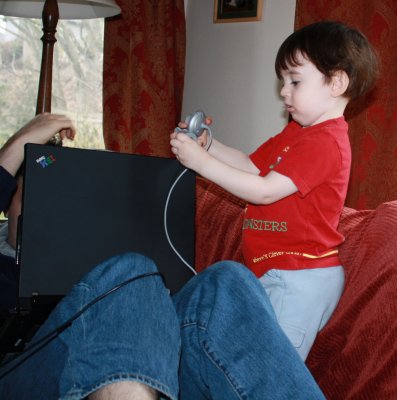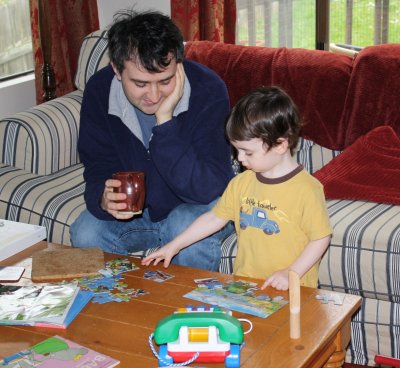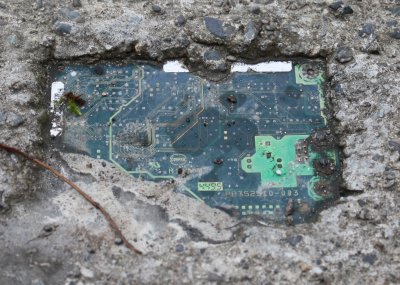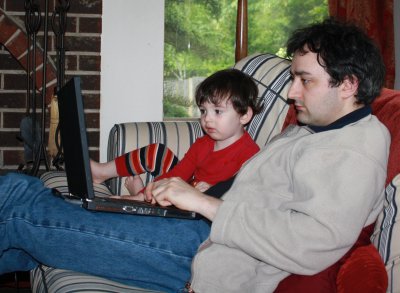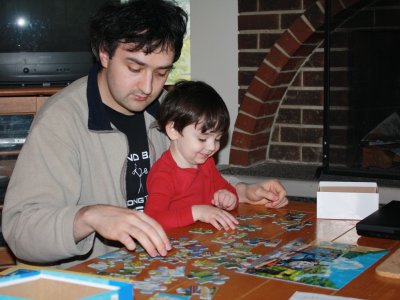I was thinking some more about convergence of game engines recently, and started wondering what a cross between a web browser and a game engine would look like.
I think the real value in this would be lowering the barrier to entry for 3D game creation, much as the appearance of HTML and web browsers made it easy for anyone to create rich documents and publish them to the world.
The first thing we need is a very high level way of specifying simple 3D environments. I think the best interface for such a task ever conceived is that of the holodeck in Star Trek: The Next Generation. Captain Picard walks into the holodeck, which initially is an empty room. he says "Computer, create me a table" and a generic table appears. Next he says "make it pine, 2 inches taller, rotate it 45 degrees clockwise and move it 6 feet to the left". Iterating in this way, he converges on the design he had in mind. Seeing the intermediate results immediately allows him to determine what's "most wrong" and therefore needs fixing first, and may also provide inspiration in the event that he doesn't really know what he wants just yet.
The difficult thing about this interface is that one needs to have a big database of objects to start with - tables, trees, bees, books and so on. Once also needs a big database of textures, a big database of transformations and so on. In fact, there are all sorts of databases which would come in handy - animations, AI routines, material properties, object behaviours. The obvious "Web 2.0" way to populate these databases is to encourage people to publish the things they create for their own games in such a form that they can be used by other people for their games. I don't think the software should necessarily go out of its way to forbid people from making content that can only be used in their own game, but making the default be "this is free to use" would probably help a lot.
If you're creating a website today you can easily find lots of free backgrounds, buttons, menus, applets and so that have been created by the community. With the right encouragement, a similar community could form around creating game things. Put a search engine on top of this community's effort so that when you search for "chair" you get a gallery of models to choose from and you're well on your way to the holodeck interface.
To create compelling games, one needs more than just a decorated 3D space to wonder around in - there need to be challenges, there needs to be something at stake. The web model breaks down a bit here - since you can get from anywhere to anywhere else just by typing in the appropriate URL, what's to stop players from just transporting themselves to the holy grail room?
I think that any non-trivial game would generally involve writing some code (possibly in an ECMAScript-ish sort of language). That code would need to have certain powers over the player, including associating information with them (like "has the player been through this obstacle yet?") and the ability to move the player (which could be done by moving a portal through the space that the player's avatar is occupying) to send them back to the beginning if they haven't completed a required obstacle or if they are "killed" by the minotaur. In computer games, death is of course never permanent, so can be effectively emulated by teleportation.
Another web principle that I think this software should embody is decentralization. Someone who wants to create a website has many options for hosting it (depending on their needs), one of which is to run their own web server. A major problem with a system like Second Life is that there is a central server, which is a single point of failure and a monopoly of sorts over the game universe. Virtual "land" is not not free in second life, it leased from the central authority. And if that central authority decides to raise their prices, censor content they find objectionable or has a server failure, there is nothing that the users can do about it. I suspect that this is a limiting factor in SL's growth.
If no-one "owns" this universe, who decides how it "fits together" (more concretely, what's to stop everyone saying "our site is directly north of Yahoo!"). I think in this scheme one has to give up having a single Hausdorff space and instead have many worlds connected by portals. The owner of a space decides what portals go in it, how large those portals are, what their positions and orientations are, how they move and where you end up when you go through them. Portals are not necessarily bi-directional - on going through one, one cannot necessarily get back to where one was just by retracing one's steps. They are more like links on a website than the portals in Portal. Mutual portals could be constructed though, if two gamemasters cooperate with each other to do so.
Ideally a portal should be rendered in such a way that you see what's on the other side - this just means that that "world" would also be loaded by the client software and rendered from the correct perspective (though should not be able to affect the player).
I think it would be great fun to wander around and explore different game worlds this way. It might be confusing sometimes, but if a place is too confusing people probably won't create many portals to it, so the system would be self-governing to some extent.
The system I've described could run with a standard HTTP server to implement a wide variety of single-player games. But where the internet really comes into its own is real-time interaction with other people - (massively) multiplayer games. Here, things become more complicated because the movements and actions of each player need to be sent to all the other players, and conflicts need to be resolved (who actually got to that loot first?) These problems have all been solved in real-life multiplayer games - one just needs a server which does some of this "real time" stuff as well as serving the content.
While games would be probably be the initial "killer application" for this, I'm sure all sorts of other interest applications would emerge.
Shortly after I originally wrote this, Google announced their O3D API which seems like it has at least some of the same aims, though at the moment I think it's really just an in-browser 3D API rather than a 3D version of the web. However, it'll be interesting to see what it evolves into.




